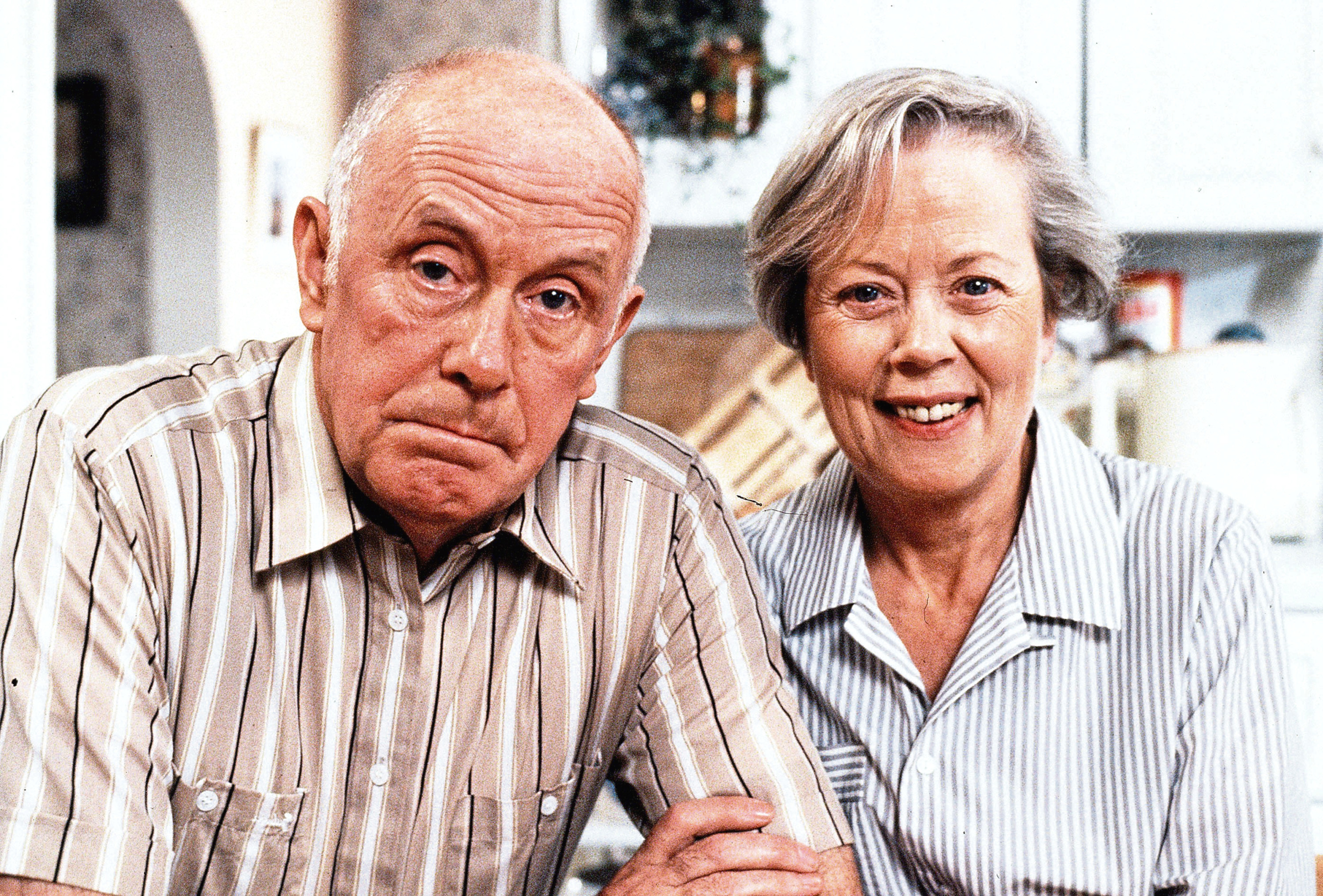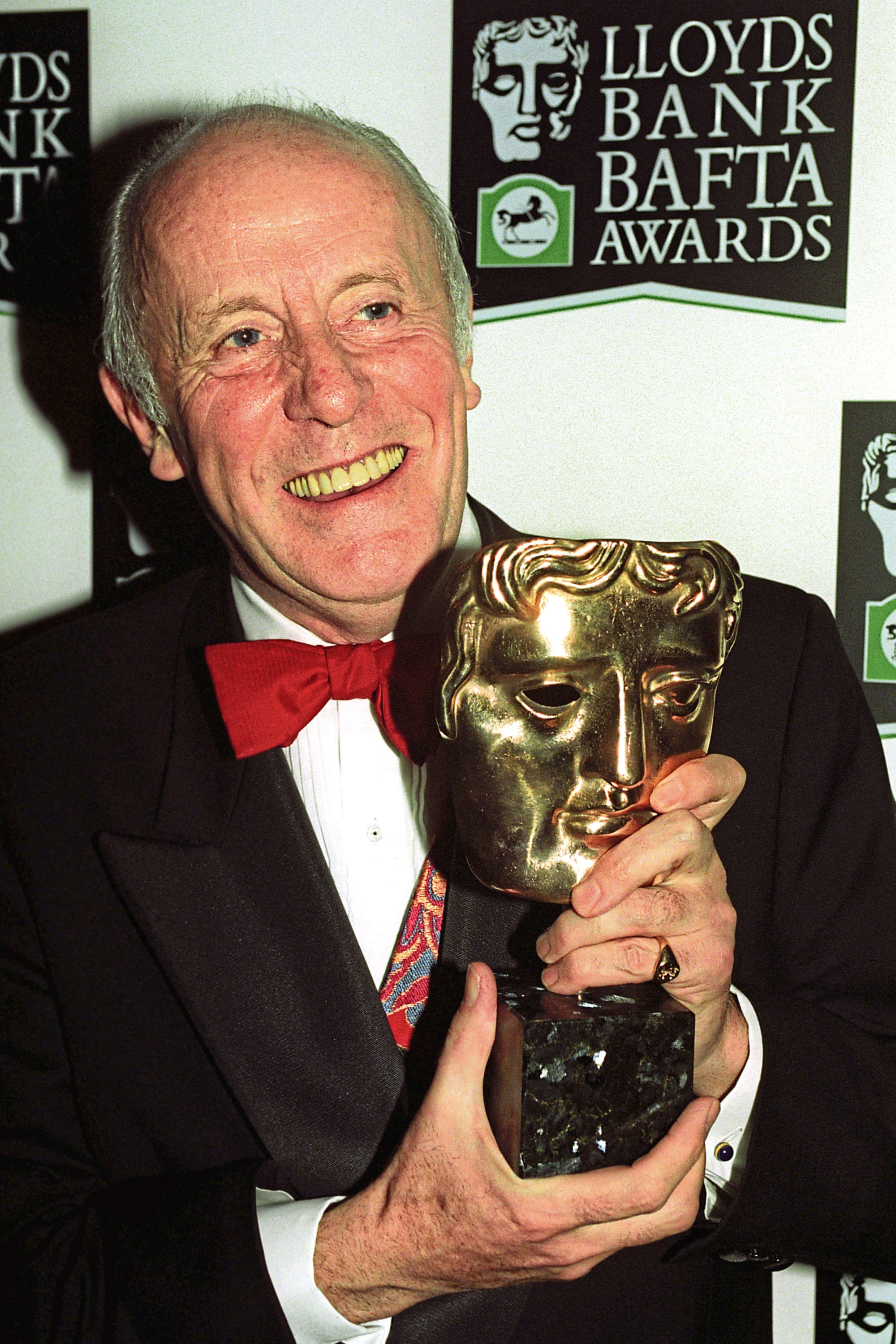
CAST your mind back: what were you watching on the evening of Monday November 20 2000?
Chances are you were torn between two major events.
Those who chose ITV were willing on a certain Judith Keppel as she edged nervously towards being first to claim top prize in Who Wants To Be A Millionaire?.
But if you were one of the 12.8 million who’d tuned in to BBC1, you will have witnessed the death of TV’s most popular grump, Victor Meldrew, in David Renwick’s deliciously black comedy One Foot In The Grave.
By the time that Judith was delighting in her new-found wealth, Victor was knocking on the Pearly Gates after being killed by a hit-and-run driver.
That night left many heavy-hearted viewers slumped in their armchairs, mourning the loss of a sterling sitcom we’d sorely miss.
But why did One Foot become such a hit and result in its leading character’s name, Victor Meldrew, being etched in the national psyche?
The show’s success can be ascribed to many factors, including writer David Renwick being the harbinger of a new style of sitcom.
Up until then, the genre had, largely, been rooted in the cosy, middle-class world of suburbia.
But with One Foot, Renwick anchored his scripts in realism, never shying away from life’s less savoury subjects, including infidelity, death, violence and vandalism.
Renwick allowed his characters to confront life’s uglier elements head on.
Being able to blend laughter with tears is a rare skill enjoyed by a lucky few, and David Renwick is one of those writers.
For any sitcom to be successful, viewers must be able to relate to the characters.
On first meeting Victor, it was easy to regard him as a crabby old man, a curmudgeon in a world he no longer suited.
Yet closer scrutiny revealed a deeper meaning, a malcontent staunchly supported by a long-suffering wife.
Understandably, Victor drove her to the end of her tether at times, but her devotion never faltered.
When One Foot In The Grave burst onto our screens in January 1990, the start of 42 episodes spread over six series, the nation was quickly gripped.
Riled by the decline in moral standards and plagued by pure bad luck, Victor Meldrew struck a chord with millions.
But it was back in 1988 that the idea for One Foot In The Grave was conceived. “An irascible character I’d developed for a comedy series at Thames in 1978 began to interest me again, and the shape of a half-hour domestic sitcom started to form in my mind,” recalls Renwick.
A madcap scene materialised, with a man trying out a conjuror’s guillotine on his wife’s best friend.
“It amused me,” says Renwick, “and within a short space of time, I’d hatched enough funny ideas and scenes to patch together some kind of half-hour.
“The premise was minimal – a man in his late 50s who’d been forced into early retirement, which is something that happened to my father when he quit his job as a milkman.
“Being laid off from his job was a device to give the character plenty of time to worry about everyday events – and to allow me to go anywhere with my plots.”
The character was christened Victor Meldrew, the Christian name chosen with calculated irony because Renwick saw him as a loser.
Meldrew was based on a role called Godfrey Above, which he’d developed for a sitcom titled God Above.
For his new sitcom, Renwick selected One Foot In The Grave – a decision he quickly regretted.
“It was the first thing I came up with and remember being amused when I thought of it as it seemed to be piling adversity and indignities on the character, which was the object of the exercise in the scripts.
“So giving the show that title was half-sentencing him to death anyway. In the end, I had to be persuaded to go with it.”
When it came to casting the role, Renwick was adamant it had to be Richard Wilson.
In fact, he’d written the scripts with him in mind.
“Richard is wonderful to write for because fundamentally he’s funny,” says Renwick.
“In addition, he has the ability to be very edgy, with great resonance to his delivery.
“And, of course, he has all the technical acuity in terms of timing, with all those wonderful slow burns and double takes.”
Not everyone at the BBC shared Renwick’s enthusiasm for Wilson playing the lead, but the writer stood his ground.
“Richard wasn’t a big name then and, yes, we could have cast a top star, someone who’d bring in a decent audience, but that doesn’t mean they’d be in sympathy with the material,” he reasons.
Experienced director Susan Belbin was put in charge of the sitcom and agreed with Renwick.
“I’d worked with him at Glasgow’s Citizen’s Theatre and although that was a drama, I could hear Richard’s voice when I read One Foot scripts,” she says.
“He has a very distinctive style – he bites words and spits them out, which is very attractive in comedy.”
Trouble was, the actor took some convincing.
“He felt he was too young,” explains Belbin.
Then aged 53, Wilson believed playing a 60-year-old dumped on the unemployment scrapheap wasn’t apposite at that stage in his career.
Belbin’s attempts to persuade Wilson failed, leaving the director and writer shocked.
Richard Wilson recalls reading the scripts and initially deciding against accepting the job.
“I didn’t feel ready to play older men,” he says. “I also didn’t take to the idea – the character seemed too angry all the time.”
With Wilson ruling himself out, Belbin and Renwick returned to the drawing board.
Renwick could only envisage one alternative – Les Dawson.
“People were probably surprised he was my second choice and, no, he wasn’t the actor Richard is, but he certainly would have got the laughs,” says the writer.
Dawson, however, was tied up with Blankety Blank, so the search widened, with the likes of Timothy West, John Thaw, Eric Idle, Andrew Sachs, Michael Gambon and Jim Broadbent discussed.
But as the clock ticked and the search for their leading actor stalled, Belbin and Renwick couldn’t believe their luck when the phone rang one morning in the director’s office at Television Centre.
It was the news they had given up on hearing – Richard Wilson, after seeing a couple more scripts, had decided to accept the part.
“David and I were absolutely thrilled,” says Belbin.
With Wilson signed up, attention switched to finding an actress to play his wife, Margaret.
Just as he’d set his sights on Wilson playing the male lead, Renwick knew he wanted Annette Crosbie for the female lead.
Having watched her performance as Liz in Tony Marchant’s three-part drama, Take Me Home, he knew she possessed the qualities required.
“I just sensed a truthfulness and intensity that would lift all this above the level of the conventional sitcom,” he says.
“It wasn’t that I found her funny as such, I just knew she could bring incredible weight to the show.”
Several actresses were auditioned for Margaret, but for Renwick and Belbin, there was only one choice.
At the audition, Belbin went for it and asked if Annette would mind reading for the part.
But as Renwick expected, Crosbie delivered a wonderful performance.
“It was brilliantly funny, she managed to mine even the in-between lines for humour, not just the more obvious jokes.
“My intuition proved to be correct – through sheer depth and honesty in her performance, she made you believe in the character and her attitudes, relate to those attitudes, and laugh at them.”
“We saw Annette and Richard as an ideal married couple for TV,” enthuses Belbin.
Casting the two main roles had been a wearisome affair, but now Belbin and Renwick had secured their dream pairing.
To be continued
Richard Webber is the author of The Complete One Foot In The Grave, authorised by the show’s creator David Renwick and published by Orion.


Enjoy the convenience of having The Sunday Post delivered as a digital ePaper straight to your smartphone, tablet or computer.
Subscribe for only £5.49 a month and enjoy all the benefits of the printed paper as a digital replica.
Subscribe